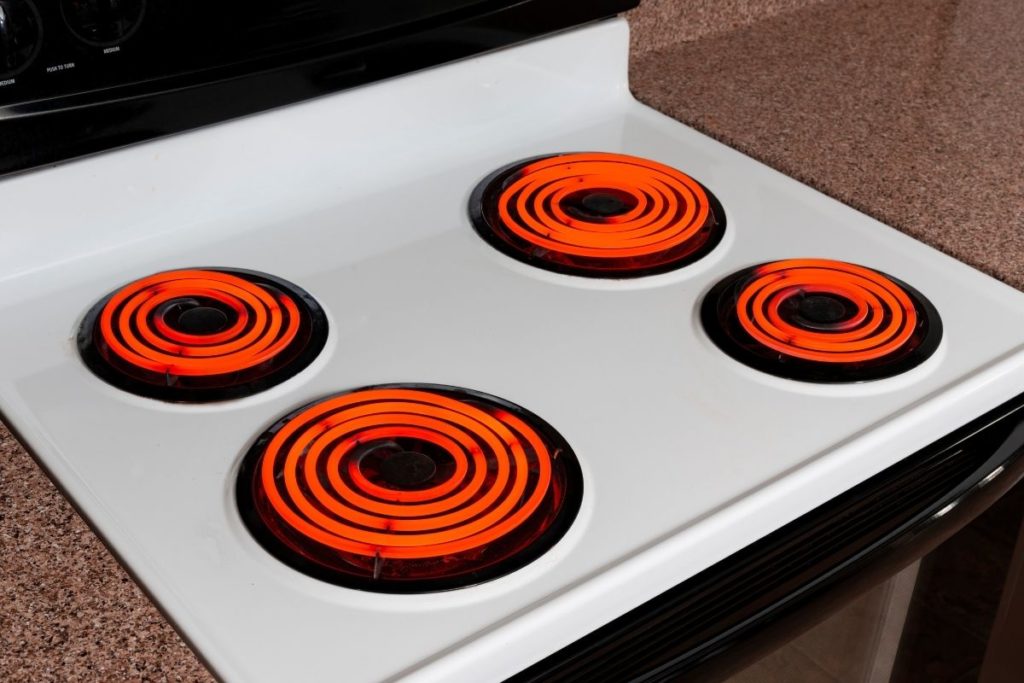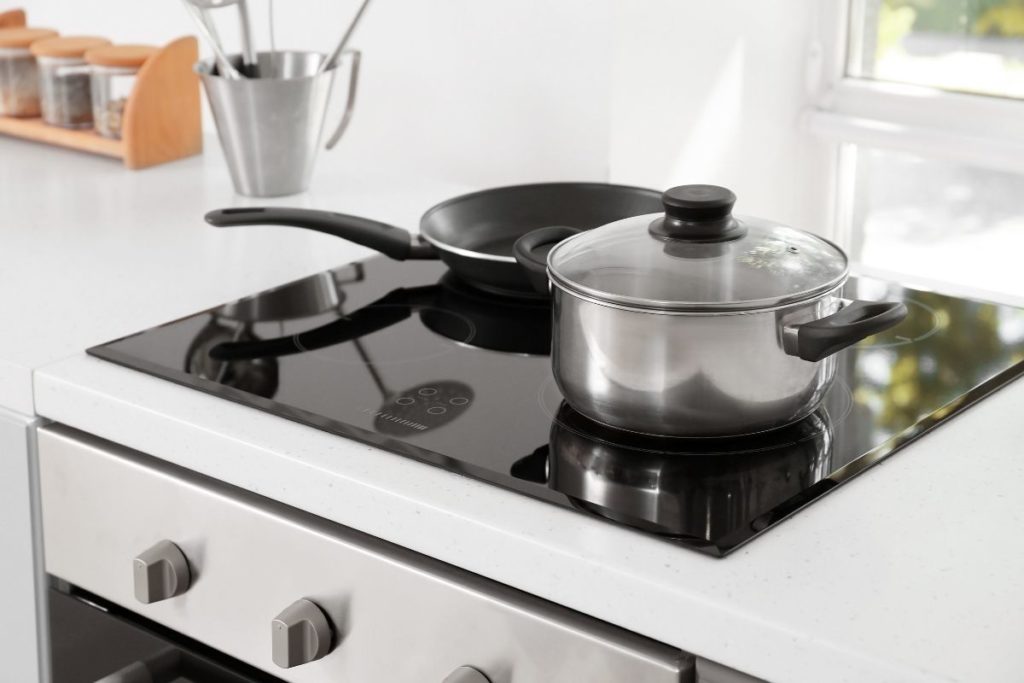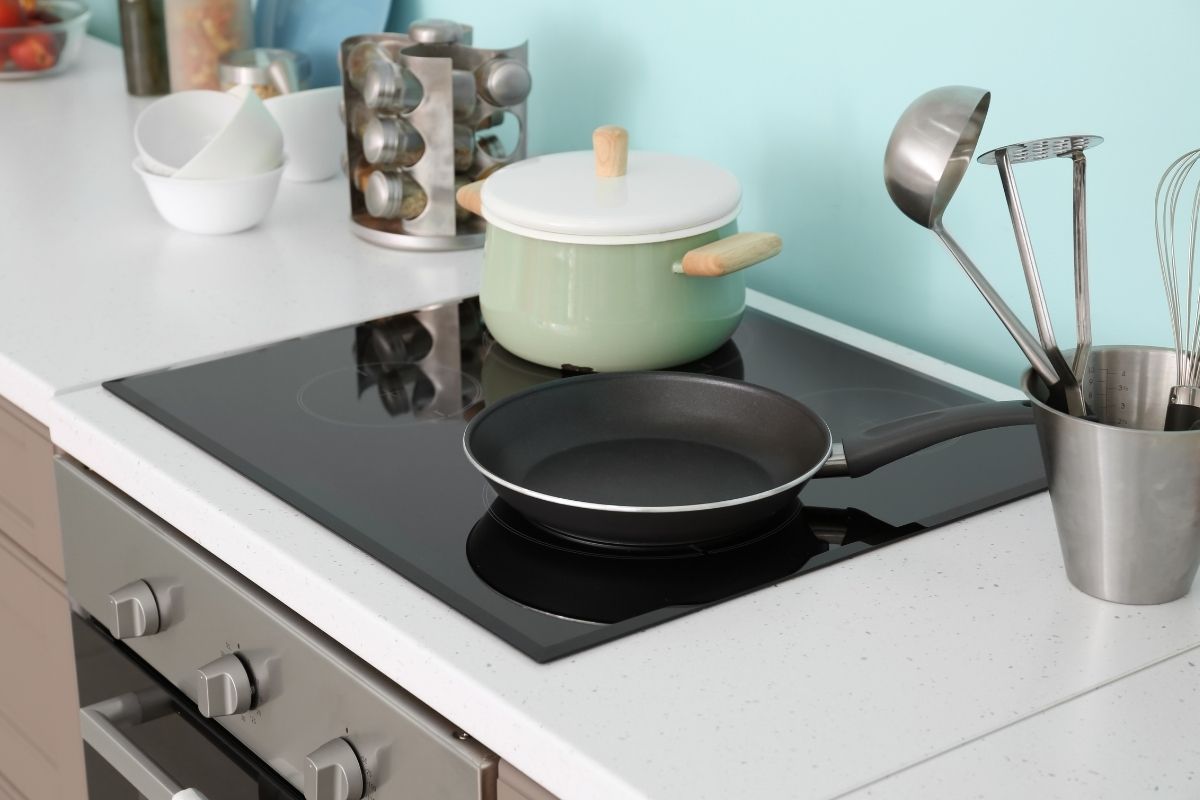How do you cook with an electric stove? Do you use low, medium, or high heat? These terms are not the same. They do not refer to the same setting on an electric stove. More importantly, they do different things. It would help if you learned to differentiate between them. Otherwise, you run the risk of either burning or undercooking your food.
What Temperature is Medium On Electric Stove?
Medium heat ranges from 300 to 400 degrees F.
Medium heat is not that difficult to identify. Unlike medium-high or medium-low heat, medium heat is an actual setting on the electric stove. You can just turn the knob to the ‘Medium Heat’ label.
Admittedly, this isn’t true for every single electric stove. Some models do not have a medium heat setting.
This is the perfect temperature for cooking everything from vegetables and pancakes to chicken and omelets.
What Stove Setting Is Medium Heat?
If your stove has numbers ranging from 1 to 9, medium heat is the number five. If the numbers range from 1 to 6, medium heat is the number 3.
The actual temperature won’t mean anything to you if your stove has ordinary numbers. But even in such a case, you can find the medium heat by simply identifying the middle setting.
You don’t have to overthink this issue. If you can find the middle setting, that is medium heat. Though, where cooking is concerned, you have to make continuous adjustments. If a recipe tells you to use medium heat, don’t assume that moving the knob to the number five is enough.
You may have to raise or lower the temperature beyond number five to meet the demands of the recipe. Additionally, in some cases, you cannot maintain medium heat.
That is to say, if you leave the knob at number five for long enough, the heat will rise past medium heat. This is why beginners are reminded to keep an eye on their food. You never know when you may have to adjust the temperature up or down.
What Temperature Is Medium High Heat On Electric Stove?
On a thermostat, medium-high heat falls somewhere between 375 degrees and 449 degrees F. If you prefer Celsius, medium-high heat is 190 – 232 degrees C.
Medium-high heat is the setting that allows you to cook food quickly without burning it. It sits between medium and high heat settings. It will brown, fry, and sauté.
If medium heat is found in the middle of the heat settings, medium-high heat is slightly higher.
What Stove Setting Is Medium-High Heat?
On a stove with nine settings (where 9 is the highest and hottest setting), medium-high heat is between 6 and 7. Anything higher than five but lower than eight counts as medium-high heat.
If your stove doesn’t have numbers for one reason or another, Fine Dining Lovers has identified a method for determining whether or not your pan is on medium-high heat.
Place your hand under a tap of cold water. Shake the wet hand over the pan. If the stove is on medium-high heat, the drops will sizzle and evaporate evenly. Don’t do this if the pan has oil.
You can use this method to test the pan before you fry eggs and prepare vegetables.
What Temperature Is Medium Low Heat On Electric Stove?
Medium-low is the temperature between 250 degrees and 324 degrees F or 121 to 162 degrees C.
Medium-Low heat is better than medium-high heat in some situations because you can maintain it for longer durations without burning the food. It will cook lean meats.
What Stove Setting Is Medium Low Heat?
If you have an electric stove with nine settings, Medium-Low heat is 3 and 4. With six knobs, medium-low heat is 2 and 3.
With the knob at these settings, you can simmer. Simmering allows you to reduce excess liquid.

It prevents food from becoming challenging to chew, which happens when you leave the stove on a low heat setting.
Medium-low and medium-high settings confuse people because they are not real temperatures or settings. They require a lot more guesswork than high or low heat settings.
Even though medium-low heat is 3 and 4, in many cases, you have to move the knob to a point between those two numbers to achieve medium-low heat. If you are struggling to find medium-low heat, just give it time. The more time you spend cooking, the easier it will become to identify this setting.
Experienced chefs rarely look at the numbers. They have used medium-high and medium-low heat so many times that they can identify these settings by sight.
What Temperature Is Low Heat On A Stove?
Low heat ranges from 200 to 300 degrees F.
People use this temperature for slow cooking. You can cook stews and beans and simmer sauces. It is worth noting that you cannot cook food by moving the knob to the low heat setting from the very start.
First, you must raise the temperature to medium heat. Once steam starts rising from the food, you can turn the knob to the low heat setting. The low heat setting is the least likely to burn food. With medium heat, the temperature can gradually rise until it becomes high heat. That is less likely to happen with low heat. In fact, you are more likely to undercook the food.
Of all the settings on a stove, low heat is one of the easiest to identify. This is because it is clearly marked. You can attain low heat by simply turning the knob to the label.
What Stove Setting Is Low Heat?
The low heat setting is clearly marked. Most stoves have labels that show the high and low heat settings. If yours doesn’t have these markings, move the knob to 1, 3, or somewhere between the two. As with all the other settings, you have to keep adjusting the temperature until the food does what you want.
Why Does Temperature Matter?

Heat is important. It makes food edible. Heat will also eliminate the toxic elements in certain ingredients. It kills microorganisms. Uncooked food is dangerous. It can just as easily poison your body.
You cannot cook food unless you understand what the different temperature settings do. The amount of heat matters. It can mean the difference between cooking a meal to perfection or burning it.
Low Heat Is Better For Soups
Low Heat allows you to cook food for extended periods. You use it to prepare soups and sauces, not to mention delicate items like fish and eggs that are less likely to survive medium or high-heat settings.
Medium Heat Is Perfect For Rapid Simmering
The medium heat setting sits between the high and low heat settings. Medium heat is somewhat harsh compared to low heat, but it is gentle compared to high heat. It will soften vegetables.
Medium heat can be high or low. Medium-high heat will fry, sear, and sauté. It is the perfect match for ground beef, omelets, French toast, etc. Medium-low heat produces tender, juicy meat.
High Heat Is Best For Browning
You use high heat to boil and sear.
You have to find the right temperature for the meals you want to cook. If the temperature is too low, you will undercook your food. If the temperature is too high, you run the risk of burning the food.
Medium heat isn’t always the best choice. Some meals require high heat settings. If you expose them to medium heat, they won’t cook.
On the other hand, for some ingredients, medium heat is too high. It is no different from a high-heat setting. It will burn them. If that wasn’t irritating enough, medium heat could become high heat if you maintain it long enough.
The temperature will keep rising until the food burns. This is why you have to experiment. Most recipes will specify the amount of heat you need. But if they don’t, try to experiment. Keep raising or lowering the heat depending on the observations you have made.
Is Temperature Different In Different Appliances?
The temperature will vary but those differences are too small to matter. For instance, on a grill, the medium-low temperature is 275 – 300 degrees. On an electric stove, the medium-low temperature is 250 to 324.
With a gas stove, the medium heat ranges between 300 and 400, which means that the medium-low setting falls somewhere between the low 200s and 300 degrees F.
As you can see, while the differences exist, they are not large enough to matter. Though, to an experienced chef, those few degrees can make all the difference in the world.

